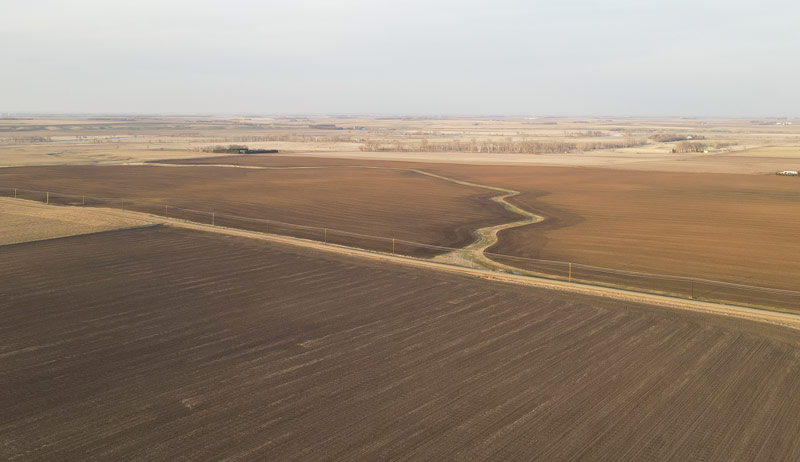
There is nothing more forceful than water on the land. It goes where it wants under the undeniable force of gravity. Water flows downhill, following dip and curve to the lowest possible point. In the spring we can observe these forces at work in our farmland and communities. The snow melts, spring rains come and water moves.
Managing Water on the Farm
Water can upset the easy management of land. Too much water and you are unable to work in the fields around the farm. Tractors get stuck, feet get muddy and boots literally pull off in the paths, leaving you barefoot in the garden.
Then, at other times, there isn’t enough water to germinate crops and grow trees. Droughts and seasonal ebbs have a huge impact on crops as growing space weathers seasonal seas of relative moisture abundance.
10,000-Foot View
Key to managing water on the land, though, is getting a good look at things. We can turn obstacles into opportunities by observing the land from above. Using drone photography is one of the best ways to get started.

These aerial photos can show the way water moves across your land during the spring melt, helping you best target opportunities. Often, the way water moves now is how it always moved. You can almost see the forgotten stream and water meadows and wetlands during this season.
Putting a selection of these waterways back into the landscape can remedy some issues and create great production opportunities. You can potentially gain higher yield per acre using ecological design and demand for fresh and local produce (and the increase profit of direct marketing). Streams and wetlands were most likely removed to make room for production, but in an increasingly uncertain climate there is no reason we can’t return bodies of water to our farm and community landscape.
Read more: Here are some basics on water cistern location and maintenance.
Building Back Waterways
First, we are talking about building dugouts, sloughs, duck ponds, streams, ponds, ditches, etc. This will require excavation. You could use a backhoe, but an actual excavator will do a much better job.
Next, we want these water bodies to begin high—as high as we can see the land may hold water and store it there as potential energy.
Then, we want to pinpoint the next series of reservoirs down the slope. This applies to land that is mostly flat, too, as there are also many potential water reservoirs in low-lying land. Also, we need to see how these water bodies can connect with streams, spillways, water meadows or through soil seepage.
Finally, we must consider how we can make use of these water reservoirs. Water stored at height has potential for irrigation, for livestock watering, for washing and (when purified) for domestic use. Water can be accessed by pumping, by gravity or by controlled flood irrigation for gravity-fed watering troughs, drip tape irrigation, sprinkler usage and stock tanks.
Read more: This video provides some helpful tips for collecting rainwater for farm use.
Types of Reservoir/Pond Feeds
But how can we keep the water in our farm reservoirs for as long as we might need it?
Some dugouts will hit a spring and replenish easily. Others will rely on surface water to fill the reservoirs in spring; these will drain from use and natural loss over the summer. Still further, some will have groundwater recharge, refilling as we drain them based on a rate of recharge.
If your pond is fed by a perennial stream, a spring or ground water with a high rate of recharge (usually a lower point on the local landscape), then digging the pond, reinforcing the banks, and creating good access is the affordable way to go. However, if your pond is filled by seasonal runoff from snow melt or rain and/or you are pumping water from another source (like a distant river or lake) to fill it, then you need to make the pond impermeable to reduce water loss.
You can do this through the use of an impermeable membrane, like a rubber pond liner, or you can work by packing the clay using a technique called puddling. This can be done in clay soil, or you can line a pond with a clay material and pack this. Either way you are squeezing the air out of the clay and making it so it doesn’t have the porosity to allow water to penetrate and percolate, creating an impermeable earthen membrane.




